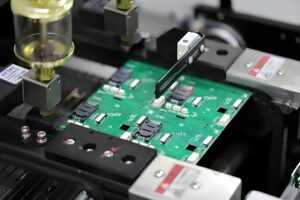In the SMT surface mount processing, material loss is an issue that cannot be ignored. It not only relates to the control of production costs, but also directly affects the economic benefits and market competitiveness of enterprises.
Reasons for material loss
1. Equipment factors: The accuracy and stability of equipment such as surface mount machines and feeders on SMT production lines directly affect the accuracy of material placement. Equipment aging, improper calibration, or insufficient maintenance can all lead to material misalignment, loss, or damage.
2. Human error: Every step from material preparation, programming, loading to finished product inspection requires manual participation. Improper operation, carelessness, or lack of training can all lead to material waste.
3. Design defects: Unreasonable PCB (printed circuit board) design, such as overly dense component layout and unclear labeling, can increase the difficulty of mounting and lead to increased material loss.
4. Material issues: Unstable material quality, dimensional deviations, improper packaging, etc. can also lead to losses during the processing.
5. Environmental factors: Static electricity, dust, temperature and humidity changes and other environmental factors can also affect the quality of the patch, causing material damage or rework
.
Strategies to reduce material loss
1. Optimize equipment configuration and maintenance: Regularly calibrate and maintain equipment to ensure it is in optimal working condition. Introduce high-precision and intelligent surface mount machines to improve mounting accuracy and efficiency.
2. Strengthen personnel training and management: Provide professional training to operators to improve their skills in equipment operation, material identification, and fault handling. Implement standardized operating procedures to reduce human errors.
3. Improve design and process: Optimize PCB design, layout components reasonably, and reduce mounting difficulty. Adopting advanced technology and materials to improve the adaptability and durability of materials.
4. Strengthen material management: Establish strict systems for material storage, requisition, use, and recycling to ensure the quality traceability of materials. Adopting an automated material management system to reduce human intervention and improve material utilization.
5. Control environmental factors: Maintain the cleanliness of the production environment and effectively control pollution sources such as static electricity and dust. Adjust the appropriate temperature and humidity conditions to create the best environment for surface mount operations.
















